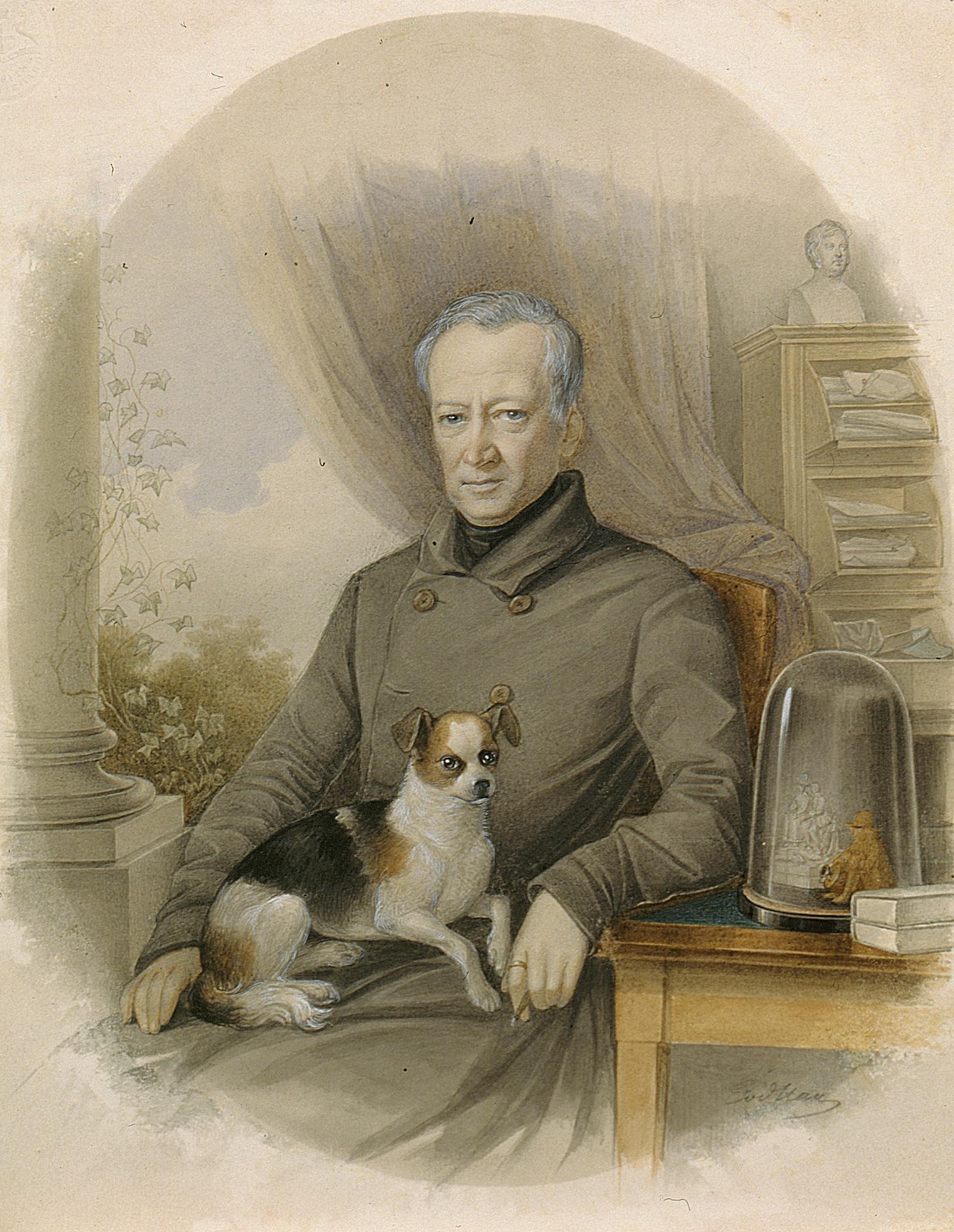The State Pushkin Museum houses a watercolor portrait of Modest Andreyevich Korf, created by the Russian artist Eduard Petrovich Hau. Although the portrait is undated, it is traditionally associated with Korf’s appointment as director of the Public Library in 1849. However, some argue that Korf is depicted as a “scientist at rest” who continues to pursue his passion. Comparative analysis of lithographed portraits of Korf from the 1860s and photographs from the early 1870s allowed researchers to conclude that the portrait was most likely created in the latter half of the 1860s.
Modest Andreyevich Korf was a friend of Pushkin from the Lyceum and a prominent government official. His abilities, diligence, and perseverance made him stand out among other students, as noted by his Lyceum teachers. These qualities helped him build a brilliant career: he worked as a translator at the Ministry of Justice, then as an official “for special missions”, and later as a department head at the Ministry of Finance. From 1826, Korf had the opportunity to work under Mikhail Mikhailovich Speransky at the Second Section of His Imperial Majesty’s Own Chancellery for approximately five years. Speransky described Korf as his best employee and assistant, calling him his “golden pen.” It was through the active involvement of Korf that the “Complete Collection of Laws of the Russian Empire” in 48 volumes and the “Code of Civil Laws of the Russian Empire” in 15 volumes were compiled.
Emperor Nicholas I saw Korf as Speransky’s successor. From 1849 until 1862, Korf was Director of the Public Library. During the last years of his career, Modest Korf was a senior government official, serving as Chairman of the Department of Laws of the State Council from 1864 to 1872.



